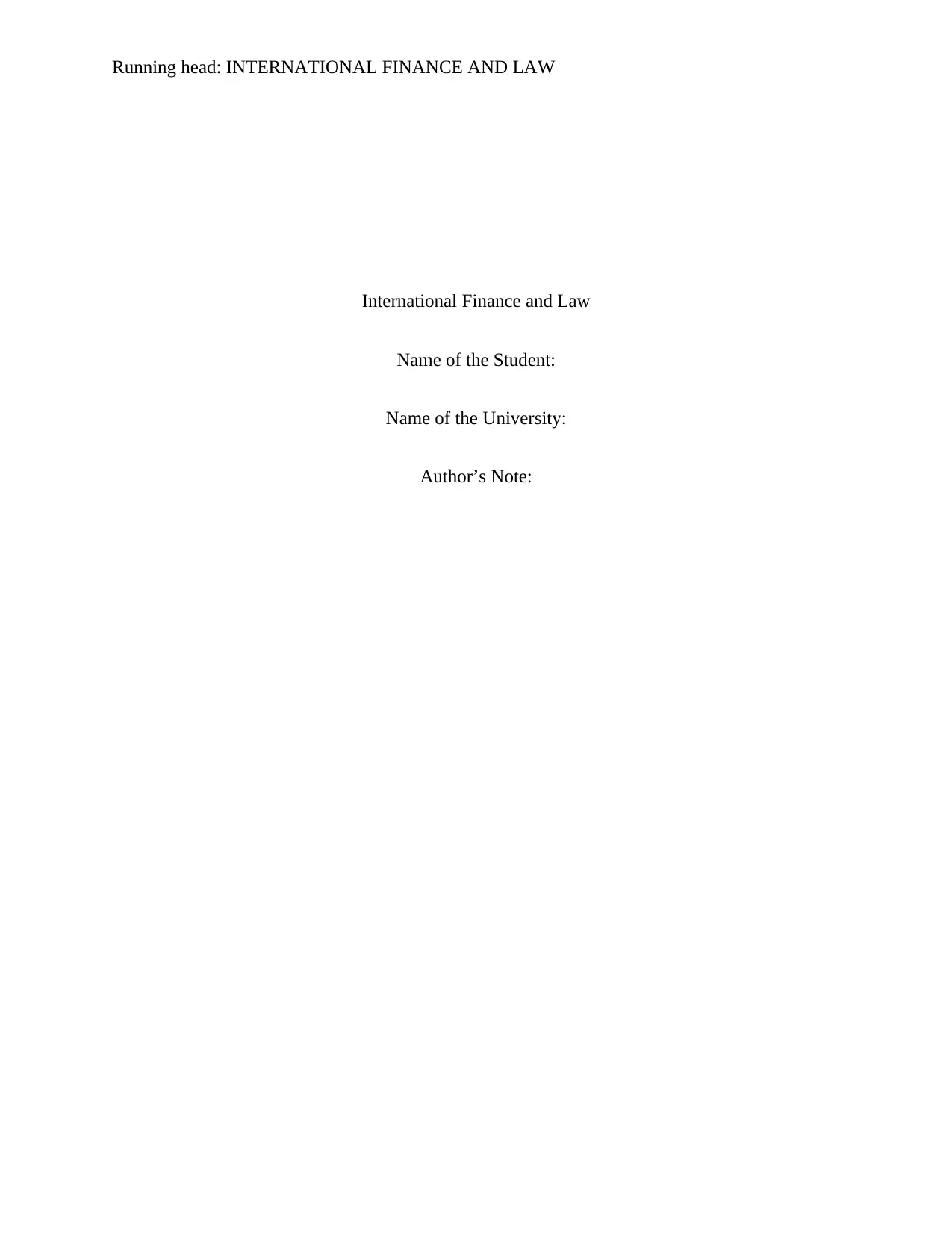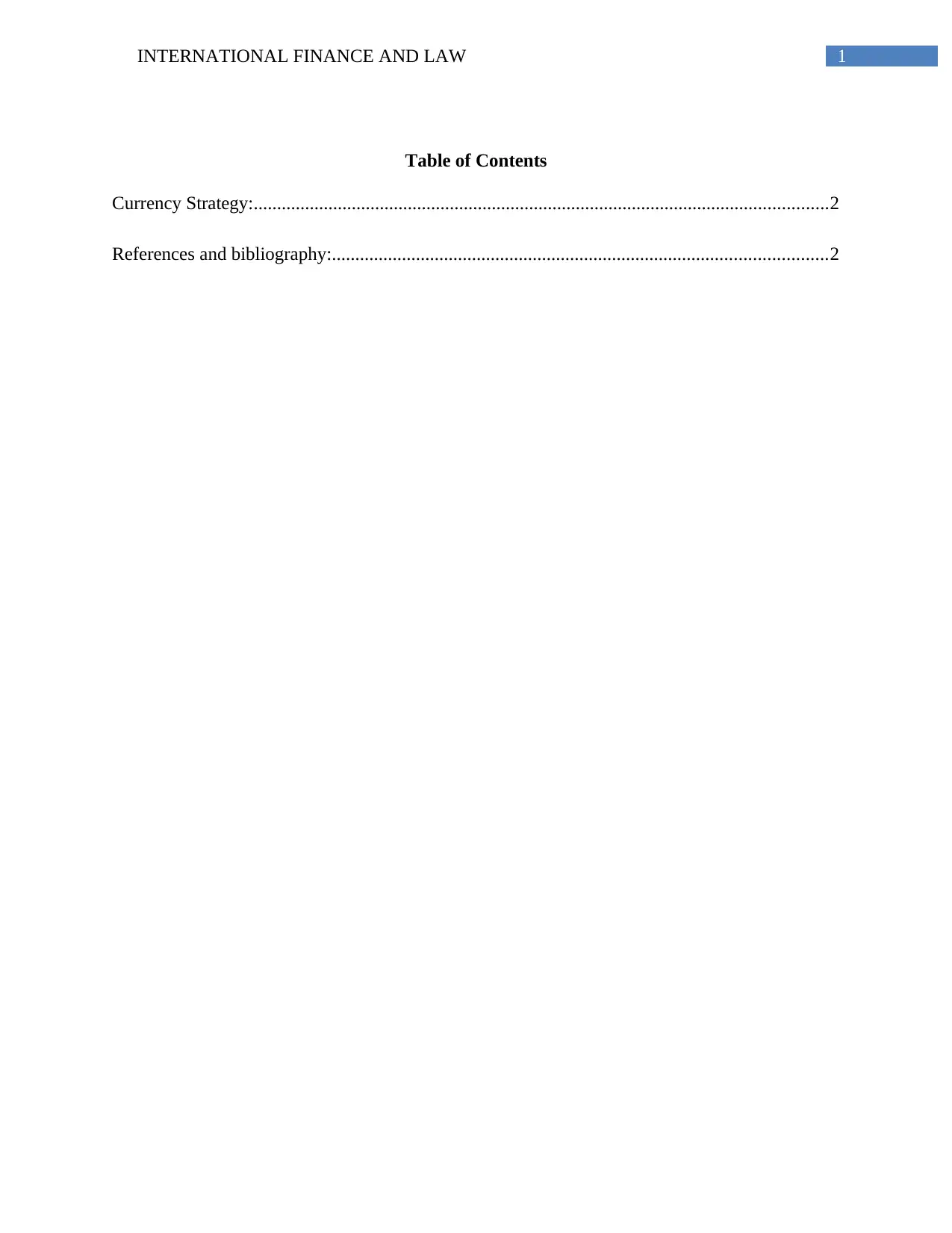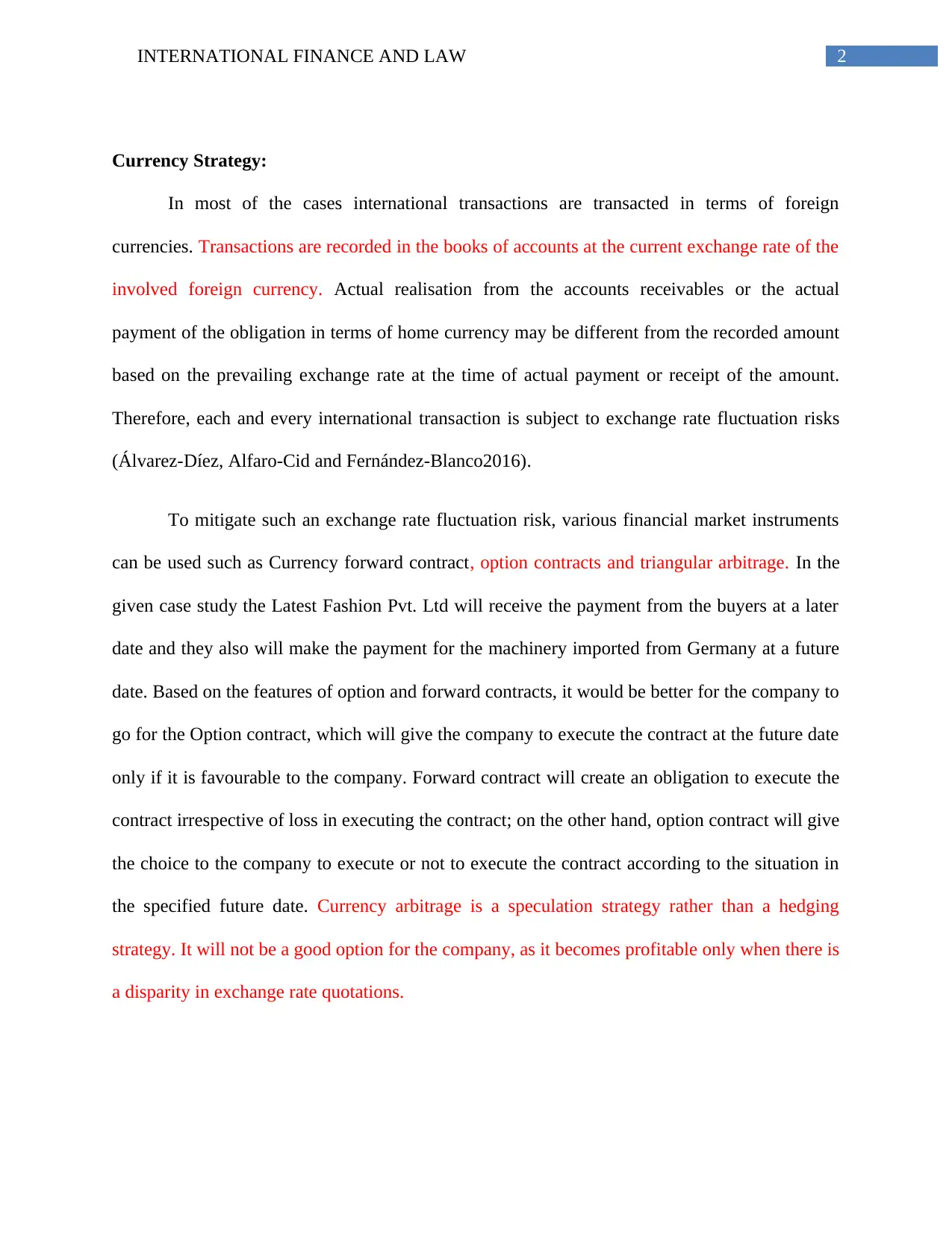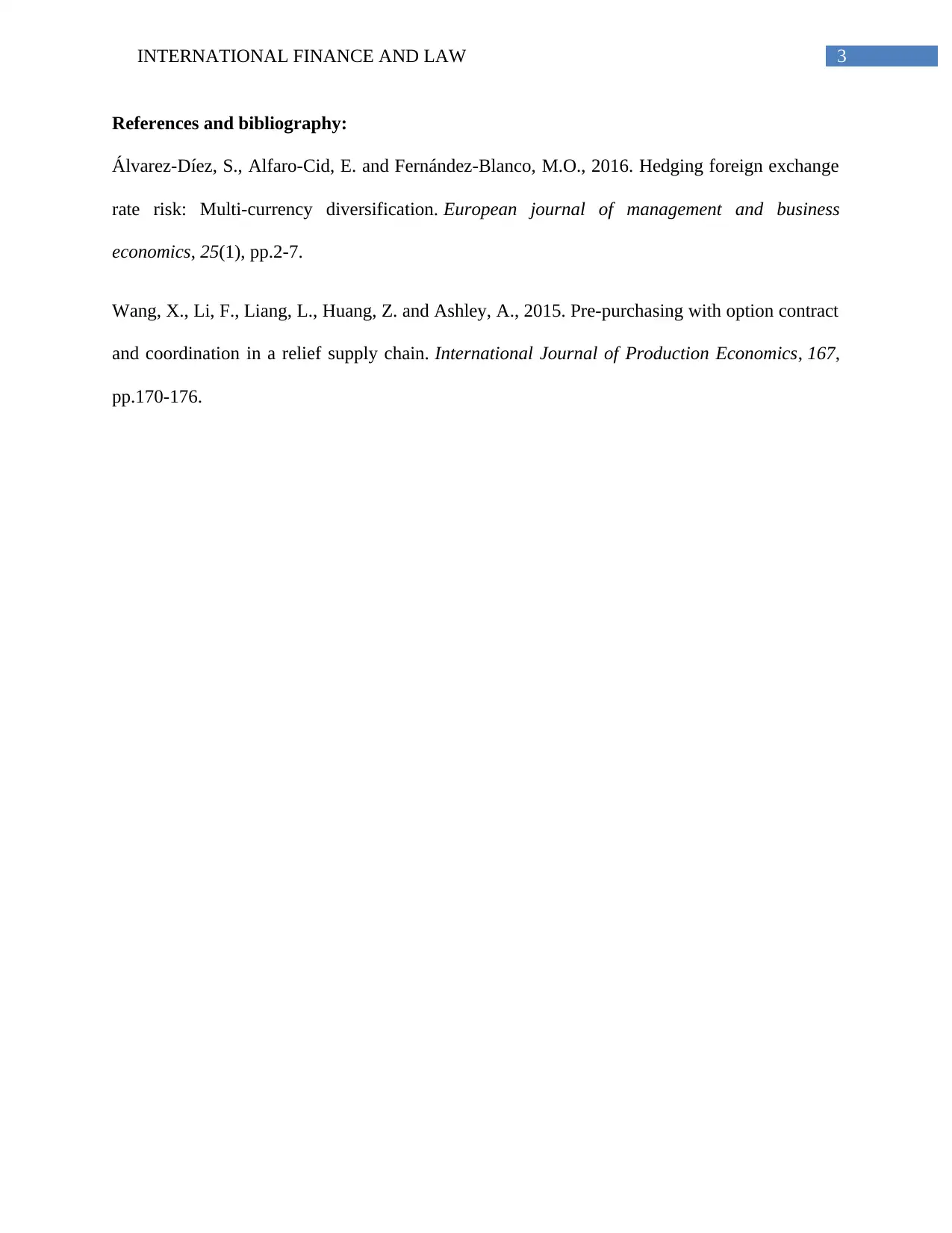International Finance and Law: Currency Strategy Analysis Case Study
VerifiedAdded on 2023/01/11
|4
|445
|72
Case Study
AI Summary
This case study delves into the complexities of international finance, focusing on currency strategy and risk management within the context of a textile exporter. It examines the challenges posed by fluctuating exchange rates in international transactions, where payments are often made in foreign currencies. The study analyzes various financial instruments, such as currency forward contracts, option contracts, and currency arbitrage, to mitigate exchange rate fluctuation risks. The author recommends the use of option contracts for the case study company, Latest Fashion Pvt. Ltd, which will receive payments from buyers and make payments for imported machinery. The study emphasizes the benefits of option contracts over forward contracts and currency arbitrage, highlighting their flexibility and suitability for hedging against currency risks. The case study references academic papers to support its analysis.
1 out of 4











![[object Object]](/_next/static/media/star-bottom.7253800d.svg)